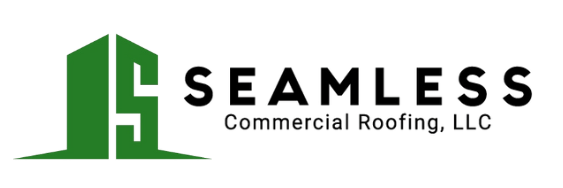Importance of Roof Inspections
Regular roof inspections play a crucial role in maintaining the health and longevity of commercial roofs. As a business owner, property manager, or facility maintenance professional responsible for the upkeep of commercial buildings, it’s essential to recognize the signs of deterioration early on to prevent costly repairs and disruptions to your operations.
Recognizing Signs of Deterioration
According to experts at Kingdom Roofing, recognizing the early signs of a deteriorating commercial roof is paramount to addressing issues promptly. Some common signs that indicate the need for attention to the commercial roof’s condition include:
- Leaks: Water stains on ceilings or walls, mold growth, or damp spots can indicate a leaky roof.
- Sagging: Visible sagging or unevenness in the roof structure may signify structural issues.
- Ponding Water: Pooled water on the roof surface can lead to water damage and should be addressed promptly.
- Cracks or Blisters: Cracks in roofing materials or blistering of the roof membrane may indicate weathering or damage.
- Loose or Missing Materials: Loose shingles, tiles, or flashing need to be repaired to maintain the roof’s integrity.
- Clogged Drains: Blocked or clogged drains can cause water backup and potential roof damage.
- Increased Energy Bills: Sudden spikes in energy costs could be a sign of insulation or roofing issues.
It is crucial to act swiftly when these signs become noticeable, emphasizing the importance of timely intervention in maintaining the roof’s health and integrity.
Timely Intervention for Roof Health
Timely intervention is key to addressing roofing issues before they escalate into more significant problems. By conducting regular inspections and addressing potential concerns promptly, you can prolong the lifespan of your commercial roof and avoid costly repairs or replacements.
To ensure the longevity and performance of your commercial roof, consider implementing a commercial roof inspection checklist to guide your maintenance efforts. By adhering to industry best practices and incorporating technological advancements in commercial roof inspections, such as using drones with high-resolution cameras and AI-powered software for predictive maintenance (GreenTek Roofing), you can stay ahead of potential issues and protect your investment.
By prioritizing the importance of regular roof inspections and taking proactive measures to address deterioration early on, you can safeguard your commercial property, maintain a safe environment for occupants, and avoid costly repairs in the long run. Stay proactive, stay informed, and elevate your roofing game with essential commercial roofing health assessment tips.
Commercial Roof Safety Standards
When it comes to the safety of your commercial roof, adhering to stringent safety standards is paramount to protect workers, occupants, and the general public. Ensuring workplace safety on commercial rooftops involves implementing practices that prioritize hazard prevention and employee well-being. The following sub-sections highlight key aspects of maintaining safety standards on commercial roofs:
Ensuring Workplace Safety
Commercial roof safety standards encompass various practices, including the appropriate use of safety equipment, fall prevention methods, and the proper handling of materials and tools. It is crucial to establish clear safety protocols and provide adequate training to workers to reduce the risk of accidents and injuries on rooftops.
Creating a culture of safety involves regular safety briefings, thorough site assessments, and the implementation of safety measures such as guardrails, harnesses, and other protective gear. By prioritizing workplace safety, you not only protect your employees but also mitigate potential liabilities associated with workplace accidents.
OSHA Regulations and Compliance
Regulatory bodies like the Occupational Safety and Health Administration (OSHA) play a pivotal role in setting and enforcing roofing safety standards to ensure safe and healthful workplaces. OSHA regulations cover a wide range of safety aspects, from fall protection to hazardous material handling, aiming to minimize risks and promote a culture of safety in the roofing industry (B&M Roofing).
Compliance with OSHA regulations is non-negotiable for commercial property owners and contractors. Regular inspections, safety audits, and ongoing training are essential components of maintaining OSHA compliance. By staying informed about the latest regulations and ensuring adherence to safety guidelines, you demonstrate a commitment to maintaining a safe working environment for all roofing professionals.
Adhering to commercial roof safety standards not only protects lives but also safeguards your investment in your commercial property. By prioritizing safety, you contribute to the longevity of your roof, minimize the risk of costly accidents, and promote a culture of responsibility and care within your organization. For a comprehensive overview of maintaining safety standards during roof inspections, refer to our commercial roof inspection checklist.

